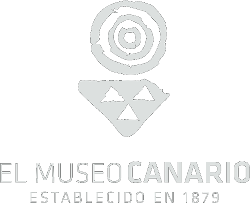Agriculture, livestock, fishing, seafood… were productive and predatory activities carried out by the prehistoric population of Gran Canaria. But not all of them had the same importance or control and access to the means of production (land, livestock…) and the products obtained from their exploitation were equal. Based on these principles, this room aims to bring the visitor closer to some of the aspects that explain the economic model of the old canaries.
Thus, agriculture was the most important activity in the configuration of the economic system of this population. Cereals were the most cultivated plants (wheat and especially barley), to which the legumes (beans, lentils and peas) would be added.
Among the cast of products being cultivated should include fig tree, the fruit of which had an important participation in the pre-Hispanic diet.
The collective barns bear witness to the outstanding social and economic role conferred on agriculture, judging by the wide distribution and storage capacity of these spaces. They are usually presented as large spaces excavated in the volcanic tuff, in whose floors and walls are arranged silos in number and variable dimensions. In the room you can see a model of the barn of El Pósito, in Temisas (Ag-imes), through which some of the characteristics of these enclaves are illustrated.
Two activities, livestock and the exploitation of marine resources, were of a momentous role in this agricultural economic model, which provided the necessary protein products to complement an essentially cerealistic diet.
The cattle herd was made up of goats, sheep and pigs. In the case of the ovicáprids, which constituted the bulk of the herd, archaeological studies point to an exploitation in which dairy products were obtained. Once slaughtered, the animal was made the most of it, as it tries to show from the wide bone-developed industry that is exhibited in one of the display cases (spatulas, punches, etc.).
Along with livestock, fishing and seafood were other momentous activities. In addition to the bone remains of fish recovered from various deposits, some of the instruments used in their catch are exposed, such as hooks and possible fragments of nets.
The canaries also developed land predation activities, such as the collection of certain plant resources (dates, mocans…) or the capture of wild animals (lizards and birds), although these practices played a secondary role with respect to other activities.

